How to Make Crystals From Epsom Salt – “Frosted” Windows in 4 Easy Steps
In this activity we are going to learn how to make crystals from Epsom salt using a piece of glass (A piece of glass from a picture frame works perfectly!)
The result is a beautiful “frosted” window! So many beautiful crystal formations appear; this activity is a favorite for our family.

Epsom salt is a compound made up of magnesium and sulfate. More specifically, it is crystallized magnesium sulfate. It is not the same as the table salt we use on food. In fact, it is much more biter than iodized salt.
As we learn how to make crystals from epsom salt, we’ll also learn about the following chemistry concepts:
- How water molecules act at different temperatures
- Changing states of matter (specifically the changing of water into gas via evaporation)
- How and why crystals form
Note: This post may contain affiliate links.
How To Make Crystals from Epsom Salt
Some Chemistry Background
Before completing this activity, it is helpful to go over some information about molecules and evaporation. This will help our students understand why and how the magnesium sulfate crystals form.
Water Molecules and Temperature
Before we get started making crystals, the first step is to boil water. Let’s look at what happens to water molecules when they are heated, when they are at room temperature, and when the molecules are at freezing or lower (32 degrees Fahrenheit.)
- The first thing to explain to your child is that everything in our world is made up of matter.
- Matter contains atoms; these atoms are so small that we cannot see them without the use of a special microscope.
- Atoms are made of electrons and quarks.
- Atoms come together to form molecules.
- A water molecule is made up of 2 hydrogen and 1 oxygen atom.
Water molecules are moving, but we cannot see them. Look at the picture below, it shows how water molecules behave when heated and cooled:
- When water boils ( 212 degrees Fahrenheit), the molecules move fast and there is a lot of space between the molecules
- When water is at room temperature, the molecules move slower than when the water is boiling. The atoms are a little closer together.
- When water is colder, the molecules move much slower and the molecules are much closer together.

Next, let’s talk about evaporation. Evaporation plays a key role in the forrmation of the crystals in this activity.
Water can exist as a solid (ice), liquid (water), and gas (water vapor). These are called states of matter. Evaporation is the process in which a liquid changes to a gaseous state (also called vapor.) Water begins to evaporate if the temperature is above freezing, which is 32 degrees Fahrenheit. The warmer the temperature is, the faster water will evaporate.
If you wipe a surface with a water-soaked sponge, the water will evaporate, but we don’t really see the water vapor as the water evaporates. In the illustration, we can see the water evaporating in the form of water vapor (a gas).

As we learn how to make crystals from Epsom salt, water evaporation happens at two times. First, when we boil water before adding it to the Epsom salt. Then, when we put the water and Epsom salt mixture on the glass and the water in the mixture begins to evaporate into the air.
Now that we have reviewed some key concepts, let’s make some crystals from Epsom salt, and we’ll continue our chemistry discussion when we discuss the results.
Instructions for Making Crystals with Epsom Salt
How to Make Crystals From Epsom Salt
Materials
- 1/3 Cup Epsom salt (fragrant-free)
- 1/2 Cup Boiling water It should be 1/2 cup after it has boiled.
- 1 teaspoon Liquid dishwashing soap mixed with a few drops of water
- 1 piece of glass (Glass from a photo frame works well.)
- 1 Mixing spoon
- 1 Mixing bowl
Instructions
- Pour the 1/3 cup of Epsom salt into a small bowl.
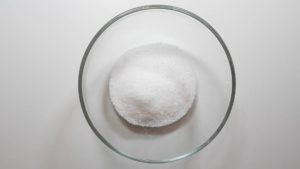
- Add the ½ cup of boiling water.
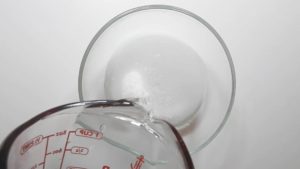
- Stir. While the Epsom salts are dissolving, explain to your child that the hot water molecules are moving faster and there is room in between those water molecules.The magnesium sulfate (Epsom salt) is able to dissolve and those atoms fill inthe free space between the water molecules. When there is no more room, thenthe Epsom salt won’t dissolve anymore.It’s also important to note. The magnesium sulfate didn’t changei ts state, it just dissolved.If your students are older, have them repeat this back to you in their own words to show understanding.
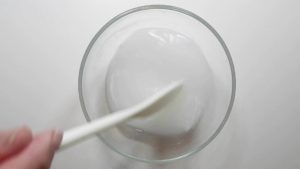
- Set this solution aside.
- Place the piece of glass on a work surface.
- Dip a few fingers into the soap and cover the glass in a very thin film of soap.This helps with adhesion of the crystals and clean up.
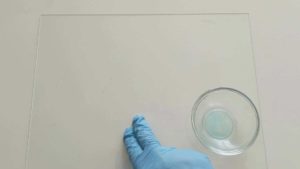
- Measure out 1 to 2 teaspoons of the solution. If you have a large piece of glass(over8x11), use 1.5 to 2 teaspoons.
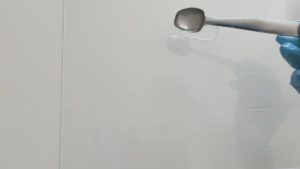
- Very carefully tilt the glass around to spread the solution.It won’t cover the entire glass. You just want to move it around a little.
- Let the solution dry for 30 to 60 minutes. (We placed oursin front of a sunny window and it was dry in 45 minutes.)
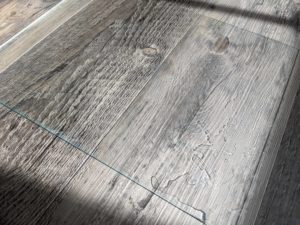
- Enjoy the “frosty" windows.
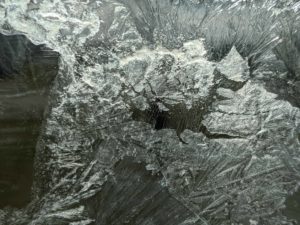
Video
What Happened? How Did We Make Crystals from Epsom Salt?
As water is heated, the water molecules move more rapidly, causing more space between the molecules. (Refer to the first diagram above.) This increases the volume and the water becomes less dense. When we mix the boiling water with the Epsom salt, the salt is able to dissolve and move into the empty spaces between the water molecules. See the diagram below.
As the Epsom salt is stirred into the boiling water, the heated water molecules have greater space between them and the Epsom salt molecules move into the spaces. When there is no more space, the solution is saturated, and will not hold any more. The solution will look cloudy when we stir it, because there is no more room for the salt molecules in between the water molecules, so they do not dissolve.
See the diagram below.

The salt molecules are not changing, so this is not a chemical reaction. The salt atoms are dissolving.
As the mixture on the glass dries, the water cools, and more space is created between water molecules. This forces the Epsom salt out as a solid.
At the same time, the water begins the evaporation process. Evaporation is when the water changes from a solid into a gas. This gas is called water vapor.
The Epsom salt does not evaporate. The salt molecules have clumped together, forming crystals.
This process is called re-crystallization.
Take lots of photos of the crystals! We used this phone attachment to get close-up photos.


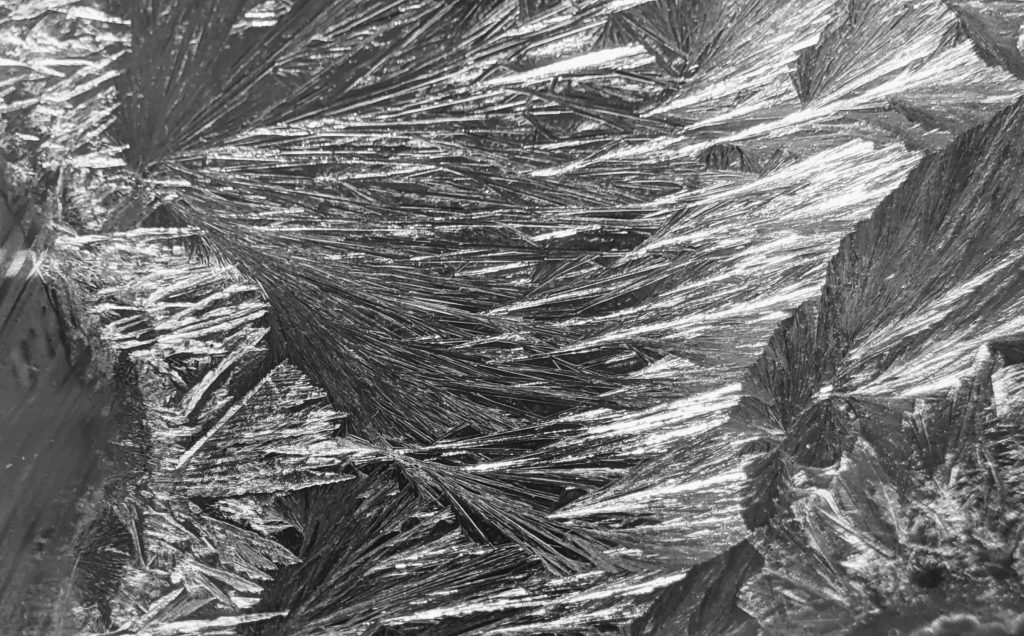
Related Resources:
After learning how to make crystals from epsom salt, check out these resources:
- Add this activity to a snowflake study. Check out our snowflake resources (and a printable lesson)
- CalTech has some excellent information and photos about different types of frost.

I hold a master’s degree in child development and early education and am working on a post-baccalaureate in biology. I spent 15 years working for a biotechnology company developing IT systems in DNA testing laboratories across the US. I taught K4 in a private school, homeschooled my children, and have taught on the mission field in southern Asia. For 4 years, I served on our state’s FIRST Lego League tournament Board and served as the Judging Director. I own thehomeschoolscientist and also write a regular science column for Homeschooling Today Magazine. You’ll also find my writings on the CTCMath blog. Through this site, I have authored over 50 math and science resources.


